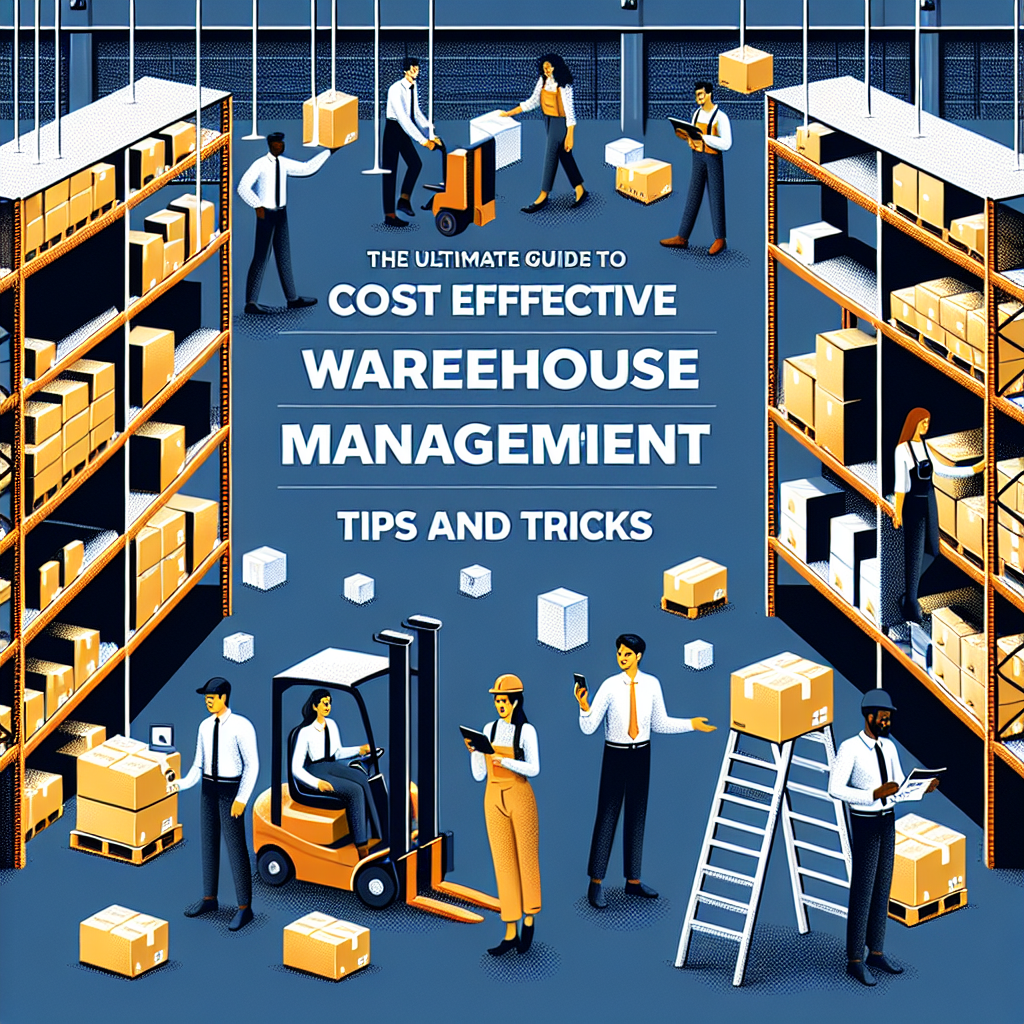In today’s fast-paced economy, effective warehouse management is vital for businesses looking to maintain a competitive edge. However, with rising operational costs, optimizing your warehouse for cost-effectiveness has never been more important. In this comprehensive guide, we’ll explore practical tips and tricks to help you streamline operations and reduce costs without compromising on quality or service.
Understanding the Importance of Cost-Effective Warehouse Management
Before we dive into the tips, it’s crucial to understand why cost-effective warehouse management is important. Efficient warehouse operations can lead to:
- Increased Profit Margins: Lowering operational costs directly increases your bottom line.
- Improved Customer Satisfaction: A well-managed warehouse ensures faster fulfillment and fewer errors.
- Sustainable Practices: Effective resource management often leads to more sustainable practices, attracting environmentally-conscious consumers.
Analyze Your Current Warehouse Operations
Conduct a Thorough Audit
The first step towards cost-effective management is to understand your existing operations. Conduct a detailed audit of your warehouse processes. Look at factors such as:
- Inventory turnover rates
- Labor efficiency
- Space utilization
- Order fulfillment processes
These insights will help you identify areas where improvements can be made.
Identify Bottlenecks
Once you have your audit, identify any bottlenecks that slow down operations. These could be in inventory processing, shipping, or even communication among teams. Addressing these bottlenecks can dramatically improve efficiency and reduce costs.
Optimize Your Warehouse Layout
Utilize Space Wisely
Space is a significant cost in warehouse management. Utilize every square foot of your warehouse by:
- Implementing Vertical Storage: Use vertical space for shelving to maximize storage efficiency.
- Arranging for Accessibility: Ensure that fast-moving items are easily accessible to speed up picking times.
- Using Cross-Docking: This method can reduce handling costs by speeding up the flow of goods through your warehouse.
Implement Technology Solutions
Investing in warehouse management software (WMS) can be initially costly, but the long-term savings are substantial. A WMS can help with:
- Real-Time Inventory Tracking: Reduce overstock and stockouts, saving storage costs and improving service.
- Automated Picking Systems: Increase picking speed and accuracy, leading to lower labor costs.
Train Your Workforce Effectively
Focus on Employee Training
Your warehouse employees are the backbone of your operations. Investing in training can improve efficiency and reduce costly mistakes. Consider:
- Cross-Training Employees: Give workers the skills to handle multiple roles, reducing labor costs.
- Implementing Safety Training: Fewer accidents mean lower insurance costs and reduced liability.
Foster a Positive Work Environment
A motivated workforce is often a productive one. Foster a culture of respect and recognition within your warehouse. When employees feel valued, they are more likely to perform better and stay long-term, saving you recruitment and training costs.
Streamline Your Inventory Management
Adopt Just-In-Time (JIT) Inventory
Just-in-time inventory management can help reduce storage costs by receiving goods only as they are needed. This method minimizes excess inventory and the associated costs of holding and storing it.
Regularly Review Inventory Levels
Conduct regular reviews of your inventory levels to avoid overstocking and stockouts. Use inventory analytics to:
- Identify slow-moving items
- Optimize reorder points
- Ensure optimal stock levels to meet customer demand
Leverage Outsourcing and Third-Party Logistics (3PL)
Evaluate the Benefits of Outsourcing
Outsourcing parts of your warehouse operations to a third-party logistics provider can result in significant savings. Evaluate the costs and benefits of using a 3PL for functions like storage, distribution, and shipping. Often, a 3PL can provide reduced rates due to their scale and expertise.
Realize Savings in Transportation
Incorporating 3PL services can also improve your shipping process. They often have established carrier relationships that could lead to better shipping rates compared to in-house logistics.
Monitor & Adjust Your Strategies
Implement Key Performance Indicators (KPIs)
Establish clear KPIs to monitor the success of your warehouse operations. Some KPIs to consider include:
- Order Accuracy Rate
- Inventory Turnover Ratio
- Labor Cost per Order
These metrics can help you identify which strategies are working and which need to be tweaked or re-evaluated.
Continuous Improvement
Warehouse management isn’t a one-time task but an ongoing process. Regularly solicit feedback from employees, customers, and stakeholders to make incremental improvements to your processes.
Conclusion: Building an Efficient Future
Cost-effective warehouse management is a multifaceted endeavor requiring attention to detail and a proactive approach. By analyzing your current operations, optimizing your layout, training your workforce, streamlining inventory, and embracing technology and outsourcing, you can not only cut costs but also enhance overall efficiency.
As the world of logistics continues to evolve, staying ahead of the curve will ensure your business thrives in an increasingly competitive landscape. Implement these tips and watch your warehouse transform into a model of efficiency and cost-effectiveness.
Take Action Today!
Ready to optimize your warehouse management? Start with a detailed audit and build from there. The journey towards cost-effective operations begins with small steps, but the rewards are well worth the effort!


